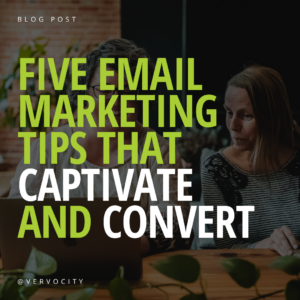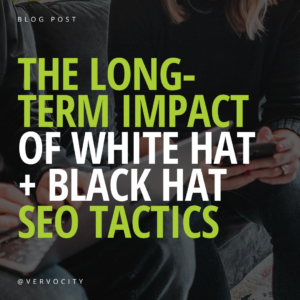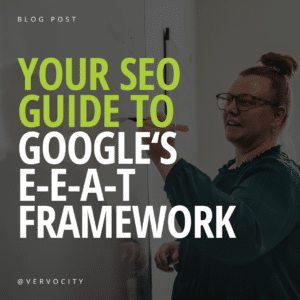Have you ever felt like your business spends too much time and money on marketing campaigns that aren’t driving results?
Chances are, you may not be using data-driven marketing. Data-driven marketing takes the guesswork out of knowing what works for your business and target audience. By using real data from real customers, businesses can push their brand in front of the right audience.
You may not know it, but you could have access to a wealth of data at this very moment. In this blog post, we’ll help businesses unlock the power of data-driven marketing and use it to create informed and effective marketing strategies.
What is Data-Driven Marketing?
Data-driven marketing is a strategy that involves using data to optimize every aspect of your marketing campaigns, from targeting and messaging to the channels you use to reach your audience. It focuses on collecting and analyzing relevant data to make informed decisions and achieve marketing goals.
Identifying how people interact with your brand ultimately leads to better marketing outcomes. Data-driven marketing empowers businesses to create strategies that are more aligned with their customer’s needs and preferences.
The result? Better return on investment (ROI), increased customer satisfaction, and improved business performance.
How do I collect data?
The first step to understanding data-driven marketing is knowing what data to collect.
Different types of data like demographic data, behavioral data, shopping cart abandonment data, customer feedback, social media data, and more provide valuable information about your customers’ actions. Collecting and analyzing customer data helps businesses gain insights into customer behavior, preferences, and pain points. Companies can then use this information to inform every aspect of their marketing strategy, from segmenting audiences to creating personalized content.
To break it down even further, here are three of the most significant data categories used to gather information:
- Customer Data: Demographic information such as age, gender, location, income, and interests. This type of data is essential for understanding the target audience and creating effective marketing campaigns.
- Sales Data: Data on sales trends, customer behavior, and product performance. By analyzing this data, businesses can optimize their sales and improve their products or services to meet customer demands.
- Website Analytics: Data on website traffic, user behavior, engagement metrics, and more. This type of data helps determine the effectiveness of a website and improve user experience.
Analytics Tools
Analytics tools make the process of collecting data more accessible than ever. We recommend the following tools for businesses looking to implement data-driven marketing:
- Google Analytics: Free analytics tool that provides detailed website traffic metrics, user behavior data, conversion rates, and more.
- Adobe Analytics: Provides businesses with the means to measure, analyze, and optimize their digital marketing performance. Allows marketers to collect and analyze data from a variety of sources, including websites, mobile apps, social media, and more.
- Hubspot Operations Hub: Automates data collection from various sources and provides insights that businesses can use to optimize their marketing efforts.
- Hootsuite Insights: Social media analytics and brand monitoring tool that provides data on engagement metrics, sentiment analysis, and social media mentions.
- Google Search Console: Provides key insights into website performance, including organic search traffic, top-performing pages, and keywords driving the most traffic. This tool also identifies website issues that could be affecting visibility in Google search results and provides valuable keyword analysis to optimize content.
How can businesses use data-driven marketing?
After you’ve started collecting information, it’s time to put the results into action. Analyze data from all customer touchpoints and use those insights to tailor your marketing strategies. Below are a few ways that businesses can use and benefit from data-driven marketing:
Personalized Experiences
Data-driven marketing empowers businesses to create personalized experiences that resonate with their customers. There are several ways that companies can improve customer experience through personalization, including:
Understanding Customer Preferences
Businesses can gain insights into individual preferences by analyzing customer behavior data. Content, products, or services can be tailored to meet each customer’s specific needs.
Targeted Messaging
Personalized messages are delivered to customers based on their past interactions, preferences, and behaviors. Customers feel valued and understood, enhancing their overall experience.
Predictive Personalization
You see first-hand how customers are interacting with your brand. Predictive personalization uses data to predict future customer behavior. Businesses can anticipate customer needs and personalize their offerings accordingly.
Improved Product Recommendations
Businesses can provide personalized product recommendations by analyzing purchase history and browsing behavior. This improves the shopping experience and increases the likelihood of purchases.
Optimized Customer Journey
Data-driven insights can help businesses identify any pain points in the customer journey and optimize it for a smoother, more enjoyable experience.
Real-Time Personalization
Data allows businesses to interact with their customers in real-time. They can respond immediately to customer actions and feedback, making their marketing efforts more relevant and timely.
Customer Segmentation
By dividing their customer base into smaller, more targeted groups based on certain characteristics, businesses can create more personalized marketing campaigns. For example, a clothing retailer might segment their customers based on gender, age, or clothing preferences. They can then create targeted emails or social media campaigns that feature products that are most likely to appeal to that specific group.
Targeted + Retargeted Advertising
Targeted advertising ensures the right message reaches the right audience at the right time. By utilizing data such as consumer behavior, interests, demographics, and past purchase history, marketers can create highly personalized ads that are relevant to specific groups of customers. Click-through and conversion rates are also often significantly higher for targeted ads over non-targeted ads, helping you to avoid wasting money on people who aren’t interested.
Retargeting, also known as remarketing, is a strategy where marketers target consumers who have previously interacted with their brand or website but did not make a purchase or complete a desired action.
Data-driven marketing empowers this strategy by tracking these interactions and using the data to serve relevant ads to these potential customers as they browse other parts of the web. For example, if a customer leaves an e-commerce site with items still in their cart, retargeting would allow the company to show ads for those items on other websites the customer visits, encouraging the customer to return and complete the purchase.
Search Engine Optimization
Data-driven marketing informs Search Engine Optimization (SEO) strategies by providing valuable insights into what audiences are searching for. It helps identify potential customers’ most effective keywords and phrases when searching for products or services.
By analyzing data such as click-through rates, bounce rates, and time spent on a page, marketers can optimize their websites to improve their search engine rankings and visibility. User behavior data can also influence SEO strategy by revealing patterns that indicate what type of content drives engagement and keeps visitors on the site longer.
Content Marketing
Not every piece of content you create will resonate with customers. Track how your content is performing and use that information to understand which format or topics are interacted with the most. Online tools, like Buzzsumo, generate industry-related content ideas and trending topics to help businesses research what their target audience is actually interested in.
Examining metrics like engagement rates, shares, comments, and conversions can help marketers refine their content strategy to produce more of what their audience wants to see. Data can also reveal gaps in the market to provide opportunities for businesses to create unique content that sets them apart from their competitors.
Marketing Spend
Don’t waste money on campaigns that aren’t working.
Businesses that leverage data to optimize their marketing spend see an increase in ROI over those that don’t. By analyzing customer data, businesses can determine which channels or campaigns drive the most engagement and conversions. This can help businesses allocate resources more effectively, ensuring that they are putting their marketing spend where it will have the most impact. Monitoring performance metrics and making data-driven decisions allow businesses to improve their marketing efforts over time.
Conclusion
We know we’ve thrown a lot of information at you in a short time. It can be overwhelming to think about analyzing and acting on all the data available to you. Don’t stress; you don’t have to make all of your marketing decisions in one day. Start small by collecting one or two types of data now and gradually expanding your efforts over time.
To be truly successful with data-driven marketing, you’ll need to invest time and work into translating data into effective campaigns. At Vervocity, we specialize in creating marketing campaigns that help our clients become wildly successful. It’s our job to research and collect industry and customer data, and we help business owners save time and money simply by doing what we do best.
Ready to unlock the power of data-driven marketing but don’t have the time? Reach out to us or give us a call at (217) 222-1451. Our services are customizable, so you only pay for what your business actually needs.











